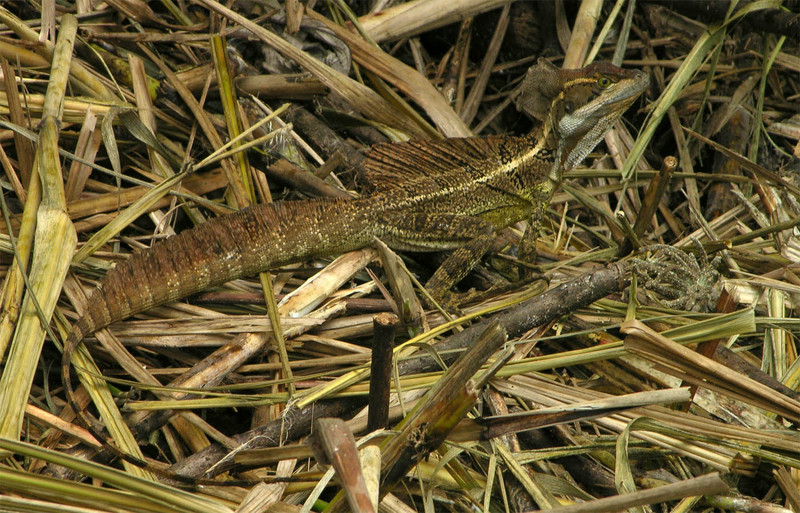|
| 질의: Birds of prey | 결과: 662번째/1662 | |
Common Basilisk (Basiliscus basiliscus) - Wiki
| 제목: | Common Basilisk (Basiliscus basiliscus) - Wiki
| |

| 해상도: 1400x897
파일크기: 304341 Bytes
촬영일: 2006:09:26 12:37:06
등록시간: 2007:10:25 15:01:09
|
Common basilisk
From Wikipedia, the free encyclopedia
[Photo] Common Basilisk (Basiliscus basiliscus). This large male basilisk is well camouflaged against dry riparian vegetation. Source: Flickr http://www.flickr.com/photos/artour_a/255979761/in/set-72157594309308272/ Photo by http://www.flickr.com/photos/artour_a/
The Common basilisk, Basiliscus basiliscus, (or simply the basilisk) is a lizard found in Central and South American rainforests near rivers and streams. It has a diet consisting of insects, flowers and small vertebrates like snakes, birds and fish. The basilisk has numerous predators including large birds of prey, snakes, fish, other larger reptiles, and mammals. The basilisk is not endangered.
The basilisk's maximum lifespan in captivity is around 7-8 years, but in the wild most die much sooner. Females lay about 2-18 eggs, five to eight times a year. Eggs hatch after about three months and the young weigh about 2 grams. Their outstanding camouflage allows them to remain undetected when they remain motionless in the undergrowth. They have long toes and sharp claws, and their head is adorned with both a crest and a coloured dewlap. Most are under 25 centimetres (1 foot) in length, but some may grow up 75 centimetres and usually weigh between 200-600 grams. Like most reptiles, basilisks are active during the day.
Ability to walk on water
The basilisk is part of the iguana family. It, along with the Brown basilisk, has the nickname the "Jesus Christ Lizard" or "Jesus Lizard" because when fleeing from a predator, it gathers sufficient momentum to run on top of water for a brief distance. Basilisks have large hind feet with flaps of skin between each toe, much like the webbing on a frog. These are rolled up when the lizard walks on land; but if the basilisk senses danger, it can open up this webbing to increase the surface area on the water relative to its weight, thus allowing it to run on water for short distances. Smaller basilisks can run about 10-20 metres on the water surface without sinking, and can usually run farther than older basilisks.
http://en.wikipedia.org/wiki/Common_basilisk
| The text in this page is based on the copyrighted Wikipedia article shown in above URL. It is used under the GNU Free Documentation License. You may redistribute it, verbatim or modified, providing that you comply with the terms of the GFDL. |
|
^o^
동물그림창고 똑똑전화 누리집
^o^
|
|